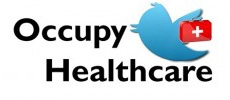I resent that we pain patients are essentially being called liars by the anti-opioid brigade, as they refuse to believe our pain is as extreme and debilitating as we claim. Some of the non-opiate medications they propose instead have more dangerous side effects than opiates, even while being much less effective. Research has shown that chronic pain itself causes brain damage and hormonal disruptions, but this factor is conveniently ignored.
Whatever the initial cause, pain can take on a life of its own in our nervous systems and persist even after its source has healed (as in Complex Regional Pain Syndrome). Pain becomes a “primary symptom” in itself, requiring the same aggressive treatment as any other debilitating illness. The longer pain is allowed to last, the more deeply its paths are worn into our nervous systems and the more likely it is to persist.
Opiates have been used for thousands of years and have proven to be safe, even for long term, use when taken as directed. They are more effective and have fewer side effects than any other medication currently used for pain – including Tylenol. There is no evidence that opiate pain management “causes” addiction either, as it’s statistically unlikely for people to get addicted to opiates they are taking for real pain as directed by their doctor.
Addiction is a separate illness and unrelated to chronic pain. Addiction is not drug-specific and addicts will use whichever drug is available, usually abusing other drugs or alcohol as well. Most overdoses involve multiple drugs, especially alcohol, which is deadly when combined with opiates. When their drug of choice is no longer available or too expensive, they don’t just stop. They are addicts, so they move on to another drug – heroin, in the case of opiate addicts.
Until people *with* chronic pain are involved in policies calling for an end to opioid use, the restrictions are coming from people who are clearly *not* experts in chronic pain. Since pain cannot be visualized or quantified in any objective manner, people without pain cannot possibly understand what we’re dealing with.
The biggest problem is when our pain is invisible. If the public could really see us, they would learn that we are more like them than like addicts. The public perception of pain patients is ridiculously negative, fueled by the relentless propaganda of the failed “War on Drugs”. Because we have to conceal our use of opiates from the public, we are hiding the benefits of opiate use – a truth the public should know before they consider denying us these medications.
How about a National Pain Day, where we all “come out” to our family, friends, co-workers (that’s where the real risk lies) and the general public? If people could see, meet, and get to know all the opioid users with chronic pain in their midst, they would sympathize more. It worked for gay people, perhaps it could work for us as well.
Until she was disabled by the progressive pain and fatigue from Ehlers-Danlos Syndrome, Angelika Byczkowski was a high-tech IT maven at Apple and Yahoo. She lives in a rustic cabin in the Santa Cruz Mountains with her husband and two dogs.
